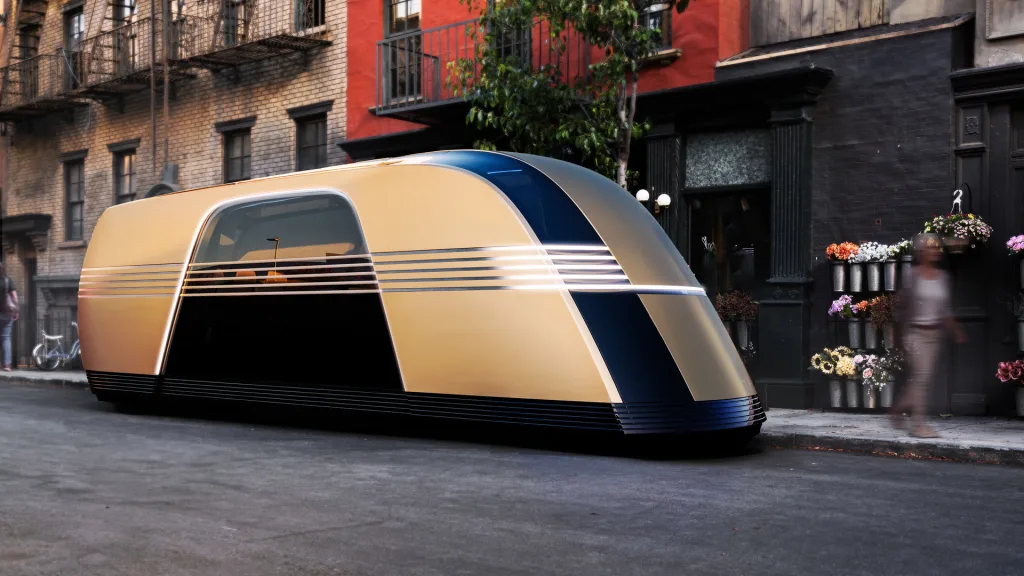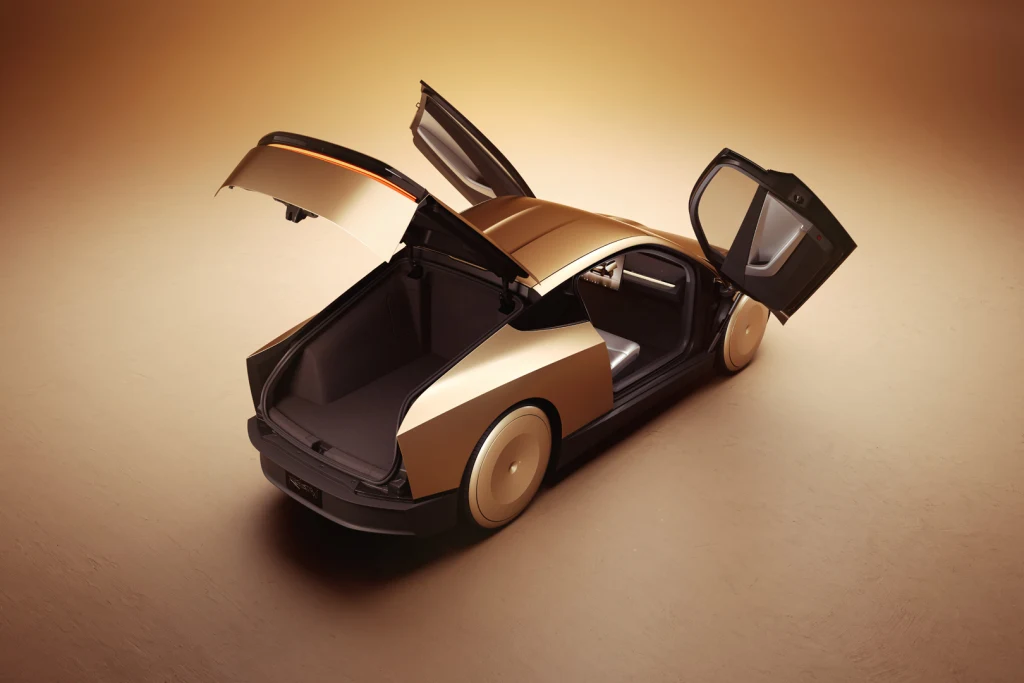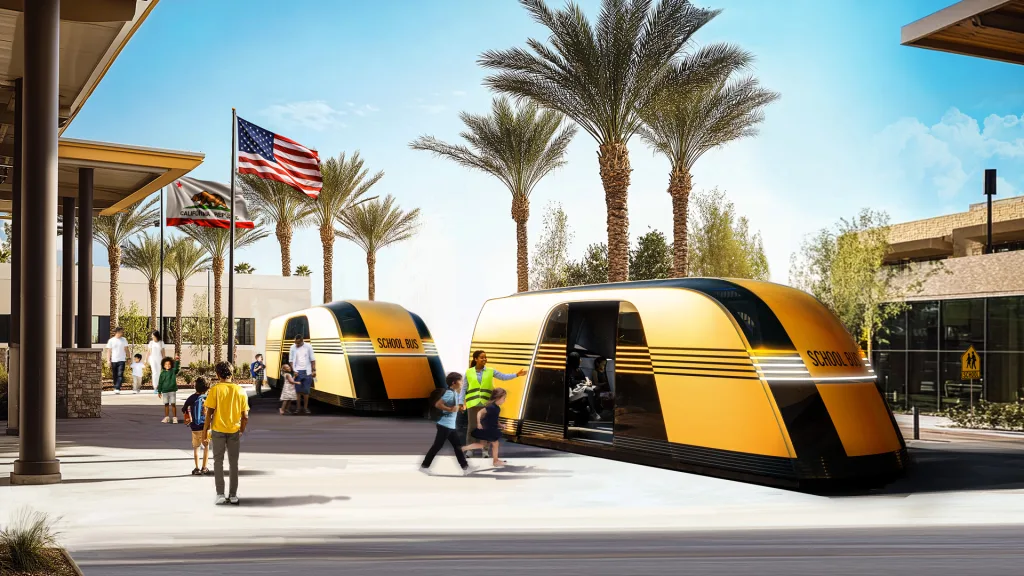Tesla introduced the long-awaited Cybercab Robotaxi at its flashy We, Robot event on October 10—which was aptly set in Hollywood, California.
The two-scissor-door, two-passenger vehicle features no steering wheel or pedals for fully autonomous use, and it was announced along with a 20-person shuttle called the Robovan. According to Musk, they will use full autonomous driving to take you to your destination, after you hail them with a yet-to-be disclosed app.
Musk said that he wants to reshape urban spaces, transforming parking lots into parks. On paper, it’s a lovely vision of a future defined by sleek, autonomous vehicles and urban renewal that will start in 2026, when the first vehicles will arrive to get hailed by customers that will get magically driven everywhere, he claimed.
To skeptics, it’s a repeat of Tesla’s hyperbole. “Musk’s rhetoric at We Robot is merely a tired repetition of the same broken promises he made five years ago at Autonomy Day,” as autonomous vehicle safety advocate Dan O’Dowd, founder of safety advocacy group The Dawn Project, put it to Fast Company in an email.

The Cybercab and the Robovan’s design
The Tesla Cybercab we saw was an orange two-door compact vehicle with a chunky back that vaguely reminds me of any generic European or Japanese or Chinese compact car (or even the Model 3 and Model Y)—but its limited capacity means only you and a single friend or family member could ever travel together. He wants to bring it to market by 2026 at a price below $30,000, charging end users 20 cents a mile. The Robovan looks like a train diesel engine from the art deco era, and is designed to carry up to 20 passengers.
The vehicle designs are certainly feasible. But anyone who has followed Tesla’s story closely can’t help but ask: Will this really happen in 2026?

Is 2026 possible?
First in the list of potential problems is the announced delivery date. All of Musk’s products—cars or rockets—have been delayed multiple times, by years, and then fell short on execution one way or another. The Cybertruck was promised in 2019, initially set for delivery in 2021, then slated to begin manufacturing in 2023, reaching buyers in November 2023.
It seems especially hard to buy when you consider the current dismal state of full autonomous driving in Tesla’s cars. As Reuters reports, there are plenty of experts who believe Tesla’s AI is lagging behind the competition, with regulatory and technical hurdles making Musk’s timeline appear unrealistic. “Tesla software is at least years behind where Waymo is. That’s the hard part. No flashy vehicle design is going to change that,” Matthew Wansley, professor at New York’s Cardozo School of Law, told the news agency.
So while Musk says that the Cybercab will make driving 10 times safer, claiming that the fully autonomous systems would vastly improve safety and affordability, some experts disagree. “After over 10 years of Full Self-Driving development, Tesla is limited to a 20-30 acre geofenced 5mph 1950s Disneyland ride on a preprogrammed, pre-mapped and heavily rehearsed route with no traffic and no pedestrians,” O’Dowd says.
Backed by Alphabet, Waymo has achieved considerable success in the autonomous driving space, with its vehicles capable of traveling 17,311 miles between critical disengagements (industry parlance for when a human has to take the wheel)—a stark contrast to Tesla’s latest FSD version, which manages only 71 miles. This is even a worse data point when you consider that, with all their experience and miles, Waymo still has serious problems with its driving software.

Potential design problems
The Cybercab may also share some of the Cybertruck’s execution problems. Tesla’s pickup came full of problems that were the product of bad design and manufacturing quality. They have prompted five recalls so far. And while the Cybertruck feels like the best example of Tesla’s failed promises, the rest of its cars—and their drivers—have suffered similar manufacturing odysseys, as reported in forums and videos online. Many of those are reflected in recalls and warnings by the National Highway Traffic Safety Administration. So when you look at those scissor doors, you instantly realize that they could become the weakest link in the chain.
The hundreds of daily open-and-closings of the motorized scissor doors will likely wear their mechanism down fast, even if they are well-built. Imagine how these door will react to the abuse it will receive in a city like New York, Mexico City, or Rome.
Which brings us to the next potential failure point: The Cybercab’s price, which Musk promised will cost “under $30,000.” Tesla recently cancelled its plans to introduce a cheaper car to compete with the cheaper EVs from brands in Asia, Europea, and the U.S. Even if they build it over an existing platform like a Model 3? It feels really hard to believe. Again, if anything, Tesla has had a story of releasing at higher prices than what they announced originally. The latest example was the Cybertruck, which costs about double its originally announced tag: It went from $39,900 back in 2019 to $60,990 at release, and now, the 2024 Tesla Cybertruck starts at $81,895.

Be skeptical
Quite simply, it’s hard to imagine Tesla’s latest vision arriving in 2026. As Ramesh Poola, cochief investment officer at Creative Planning, told Reuters, “Obviously, we were looking for more details on what exactly his future plans are going to be.” Sure. But the public and the investors have been left wondering if this vision is backed by much more than a premature spectacle.
The very concept of a fully autonomous vehicle is one that Musk has been promising for nearly a decade. Originally claimed to be arriving in 2017, that date has been pushed back repeatedly, year after year. We are now looking at a potential launch in 2025, according to Musk’s latest statement. As O’Dowd writes, “Elon Musk has claimed that Tesla will solve FSD ‘this year,’ every year since 2014, most recently in July. Now he has announced that FSD has been delayed another year until the end of 2025. This date will be delayed again next year as it has for each of the past 10 years.”
So will the Cybercab be ready for 2026? That’s about as hard to imagine as a Martian base. Perhaps that’s why Tesla’s stock is sinking after the announcement.